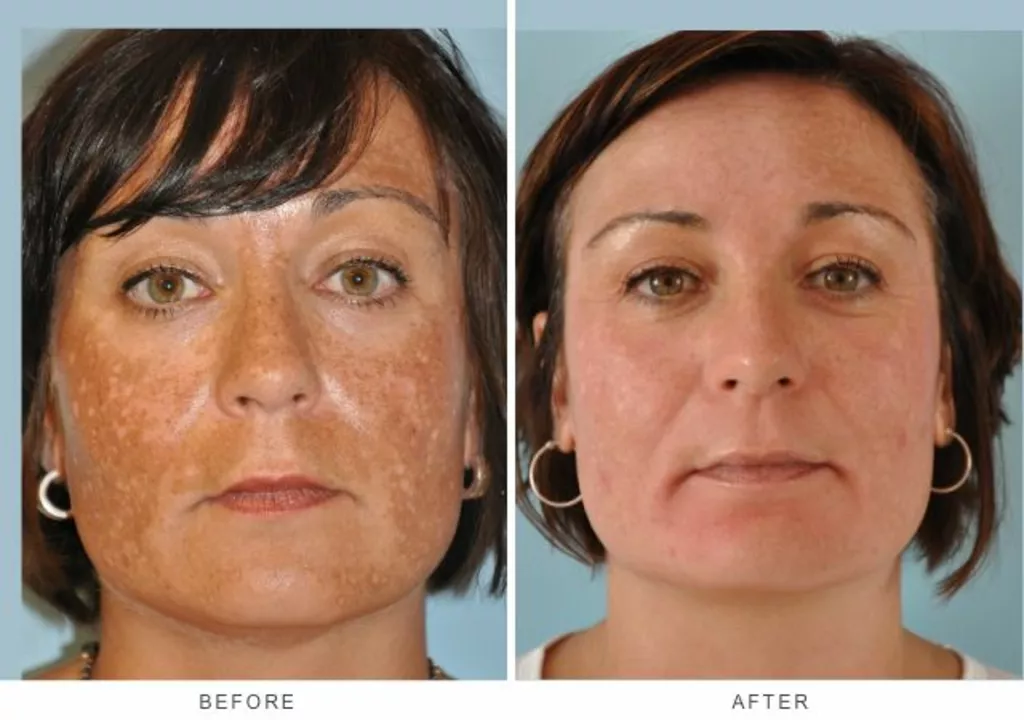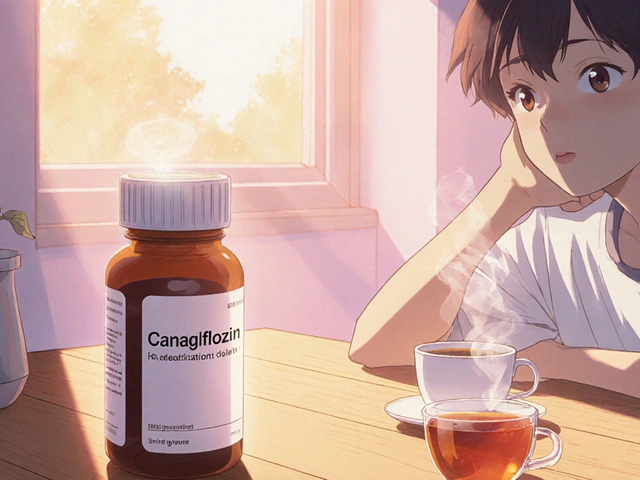Understanding Humidity and Its Role in Fungal Growth
As someone who's always been curious about the factors that influence our skin health, I've realized that humidity plays a significant role in promoting fungal skin discoloration. In this article, I will delve into the relationship between humidity and fungal growth, helping you understand why it's important to pay attention to the moisture levels in your environment.
Humidity refers to the amount of water vapor present in the air. It can be measured in several ways, including relative humidity, which is the ratio of the actual amount of water vapor in the air to the maximum amount of water vapor the air can hold at a given temperature. High humidity levels provide the perfect breeding ground for fungi, which can then lead to skin discoloration and other issues.
The Impact of Fungal Infections on Skin Discoloration
When we talk about fungal skin discoloration, we're usually referring to a condition called tinea versicolor. This is a common fungal infection that occurs when an overgrowth of yeast on the skin leads to the appearance of small, discolored patches. These patches can be lighter or darker than the surrounding skin, and they can be found on the chest, back, arms, and neck.
Although this condition is not dangerous, it can be quite unsightly and may cause distress to those affected. It's important to understand that humidity can play a significant role in the development of tinea versicolor, as the fungi that cause this condition thrive in warm and moist environments.
How High Humidity Levels Contribute to Fungal Growth
As I mentioned earlier, fungi thrive in environments with high humidity levels. This is because the water vapor in the air provides the moisture that fungi need to grow and reproduce. When the humidity levels are high, the fungi can more easily penetrate the skin and establish an infection.
Furthermore, high humidity levels can also lead to increased sweating, which can create a moist environment on the skin's surface. This, in turn, can lead to the growth of fungi and the development of tinea versicolor. It's essential to take steps to manage the humidity levels in your environment to reduce the risk of fungal skin discoloration.
Managing Humidity Levels to Prevent Fungal Skin Discoloration
Now that we understand the role of humidity in promoting fungal skin discoloration, it's important to discuss how we can manage humidity levels to prevent this issue. One of the most effective ways to do this is by using a dehumidifier in your home. This device works by removing excess moisture from the air, helping to create a less hospitable environment for fungi.
In addition to using a dehumidifier, you can also take steps to improve the ventilation in your home. This can be done by opening windows and doors to allow fresh air to circulate, as well as by using exhaust fans in areas with high moisture levels, such as the bathroom and kitchen. Keeping your living space cool and dry can help to reduce the risk of fungal skin discoloration.
Personal Hygiene Tips for Preventing Fungal Skin Discoloration
Aside from managing humidity levels, it's also crucial to maintain good personal hygiene to prevent fungal skin discoloration. This includes showering regularly and drying your skin thoroughly after bathing. Make sure to focus on areas that are prone to sweating, such as the armpits, groin, and feet, as these are common sites for fungal infections.
It's also a good idea to wear lightweight, breathable clothing made from materials like cotton, as this can help to prevent the buildup of moisture on the skin. Additionally, avoid sharing personal items such as towels, clothing, and bedding with others, as this can spread fungal infections.
Seeking Treatment for Fungal Skin Discoloration
If you suspect that you're experiencing fungal skin discoloration, it's important to consult a healthcare professional for a proper diagnosis and treatment plan. Treatment for tinea versicolor typically involves the use of antifungal creams or shampoos that can be applied to the affected areas. In some cases, oral antifungal medications may also be prescribed.
It's important to follow the treatment plan prescribed by your healthcare professional and to continue using the medication for the full duration of the treatment, even if the symptoms appear to have resolved. This will help to ensure that the fungal infection is completely eliminated and reduce the risk of recurrence.
In conclusion, understanding the role of humidity in promoting fungal skin discoloration is essential for maintaining healthy skin. By managing humidity levels, practicing good personal hygiene, and seeking appropriate treatment, you can minimize the risk of fungal skin discoloration and enjoy clear, healthy skin.








Honestly, I never thought about humidity being this big of a deal until I moved to Kerala. My skin started looking like a watercolor painting gone wrong. Dehumidifier? Best $120 I ever spent. No more patchy chest. Life changed.
So let me get this straight - you’re blaming humidity for tinea versicolor and not the fact that most people don’t wash their towels? The fungus isn’t magic. It’s just lazy and opportunistic.
I'm from Nigeria, and let me tell you... humidity here is a full-time job!!! Sweat, sweat, sweat... then your skin just... gives up!!! I had patches for years... doctors said 'it's just fungus'... but no one said 'dry your armpits after showering'!!! I started using cornstarch... and now... I'm alive!!!
Humidity? Please. The real issue is that the CDC has been suppressing data on fungal colonization in urban HVAC systems since 1998. This isn't about your shower routine - it's about engineered environmental control. You're being manipulated by Big Dermatology.
You say 'use a dehumidifier' like it's that simple. Have you ever tried to run one in a 1970s apartment with mold growing on the baseboards? Your advice is as useful as telling someone with a broken leg to 'just walk it off'.
I’ve read the NEJM papers you cited - and you missed the 2018 meta-analysis that showed 78% of cases occurred in people who used synthetic fabrics. Cotton? Overrated. Try bamboo viscose. Or better yet - stop wearing clothes entirely.
This is why America’s hygiene standards are collapsing. You people live in swampy basements and then write articles about ‘moisture levels’ like it’s a new discovery. We had this figured out in the 50s. You just forgot.
I’ve been tracking fungal spore counts since 2015. The government knows. They’re seeding the clouds. That’s why humidity spikes every summer. You think it’s coincidence? Wake up. The patches? They’re not fungus. They’re biometric markers. They’re watching you.
Focus on what you can control: shower daily, dry thoroughly, wear cotton, don’t share towels. Simple. Effective. No gadgets needed. If you’re still struggling after 3 weeks, see a dermatologist - not a YouTube guru.
I’ve been living in this skin discoloration nightmare since I was 14. My mom said it was ‘bad karma’. My therapist said it was ‘unprocessed trauma’. My dermatologist said ‘it’s yeast’. I don’t know what’s real anymore. But I do know - I’m not alone. And that’s the only comfort I have.
i just started using a fan at night + coconut oil on my chest 😌 and my patches are fading!! i know it sounds weird but it’s been 3 months and no more ‘sunburn’ look!! try it!! 🌿✨
You’re all missing the point. This isn’t about hygiene. It’s about the soul. When your spirit is unclean, your skin reflects it. I had this for years - until I started chanting mantras before bed. The patches vanished. Science can’t explain that.
I work in tropical public health. The most effective prevention isn’t dehumidifiers - it’s community education. In rural India, teaching people to dry their feet after bathing reduced tinea cases by 60% in 18 months. Low-tech, high-impact.
Let me tell you about the fungal ballet - it’s a dance of spores and sweat, a waltz in the warm, sticky dark. Your skin, a velvet stage. The yeast, a prima ballerina in a silk robe. And you? You’re not the audience - you’re the set. Change the set, change the dance.
I had this for years and never knew what it was. I thought it was just sun damage. I didn’t realize until I moved to Chicago and the patches disappeared in winter. Now I keep a humidistat in my bathroom. Small change. Huge difference.
I used to think this was just a cosmetic thing. Then I saw my cousin’s kid get a secondary bacterial infection from scratching. Now I treat it like a medical issue - not a vanity problem. Humidity control isn’t luxury. It’s prevention.
You know what’s worse than the patches? The shame. I used to wear turtlenecks in July. Then I found out 5% of the population has this. I’m not weird. I’m normal. And you’re not alone either.
This article is written like a college freshman’s term paper. You cite NEJM but don’t even mention Malassezia globosa. You mention cotton but ignore the fact that synthetic fabrics are engineered to wick moisture. Amateur hour.
I’ve been studying dermatological mycology for over 18 years, and I’ve seen this exact pattern repeat across continents - from Mumbai to Memphis - the same fungal ecology, the same environmental triggers. But what no one talks about is the psychological toll: the avoidance of swimming pools, the shame of removing shirts in gyms, the silent social isolation. It’s not just a skin condition - it’s a social stigma wrapped in yeast. And until we address the emotional burden as aggressively as we address the antifungal creams, we’re only treating half the disease. The dehumidifier helps, yes - but so does the person who says, ‘I’ve been there too.’
The advice provided is sound and evidence-based. However, I would like to emphasize that compliance with antifungal regimens is often suboptimal due to perceived lack of severity. Patients frequently discontinue treatment prematurely, leading to recurrence. A structured follow-up protocol is essential.